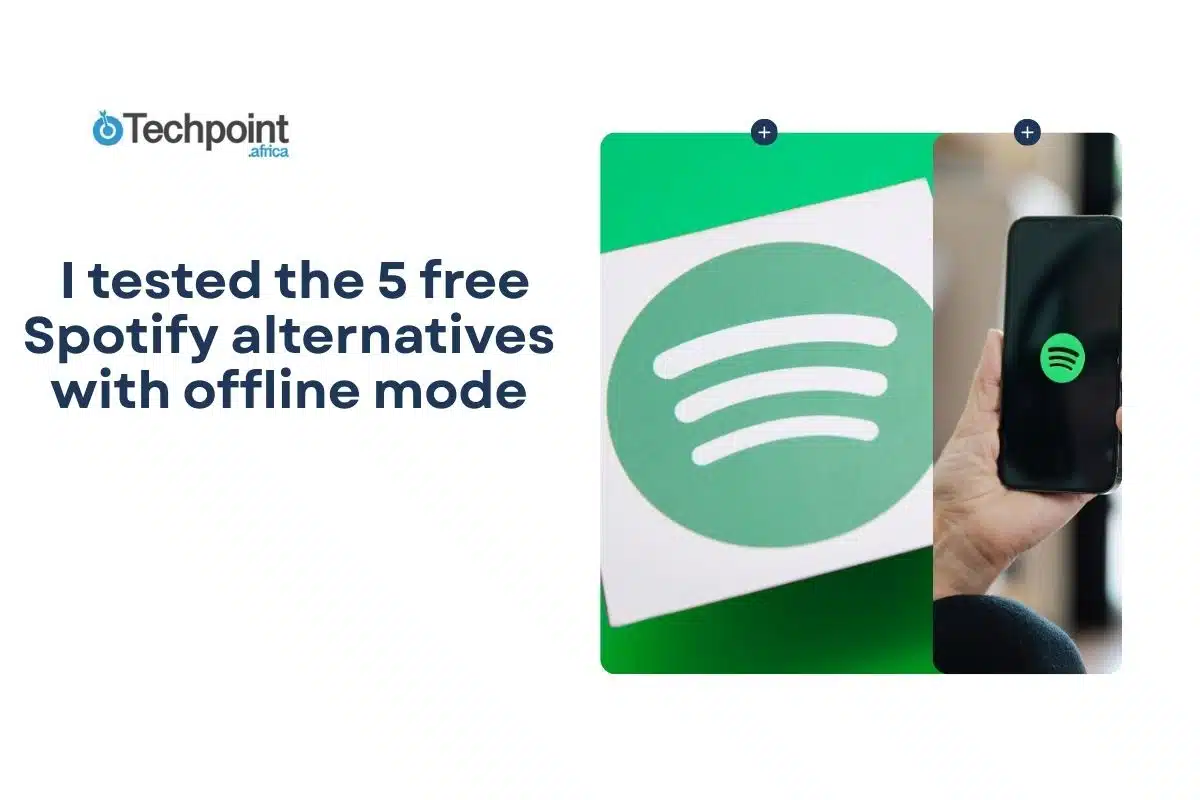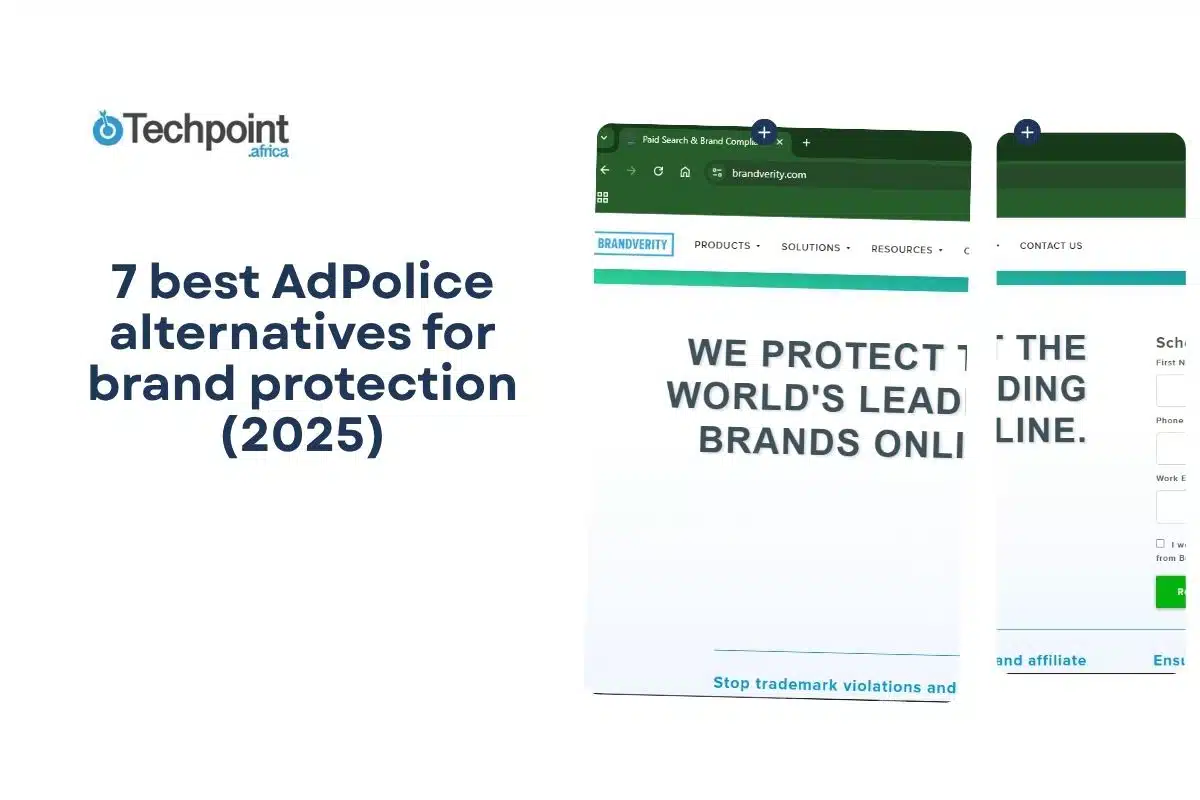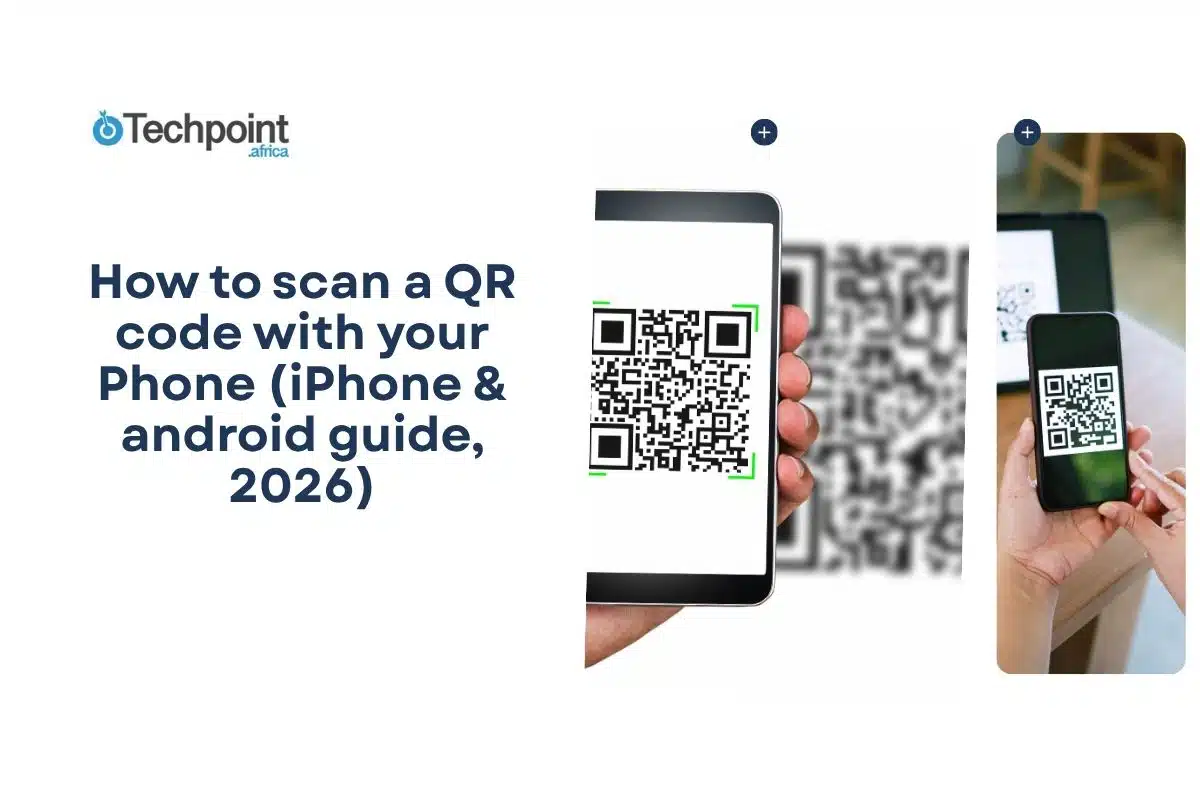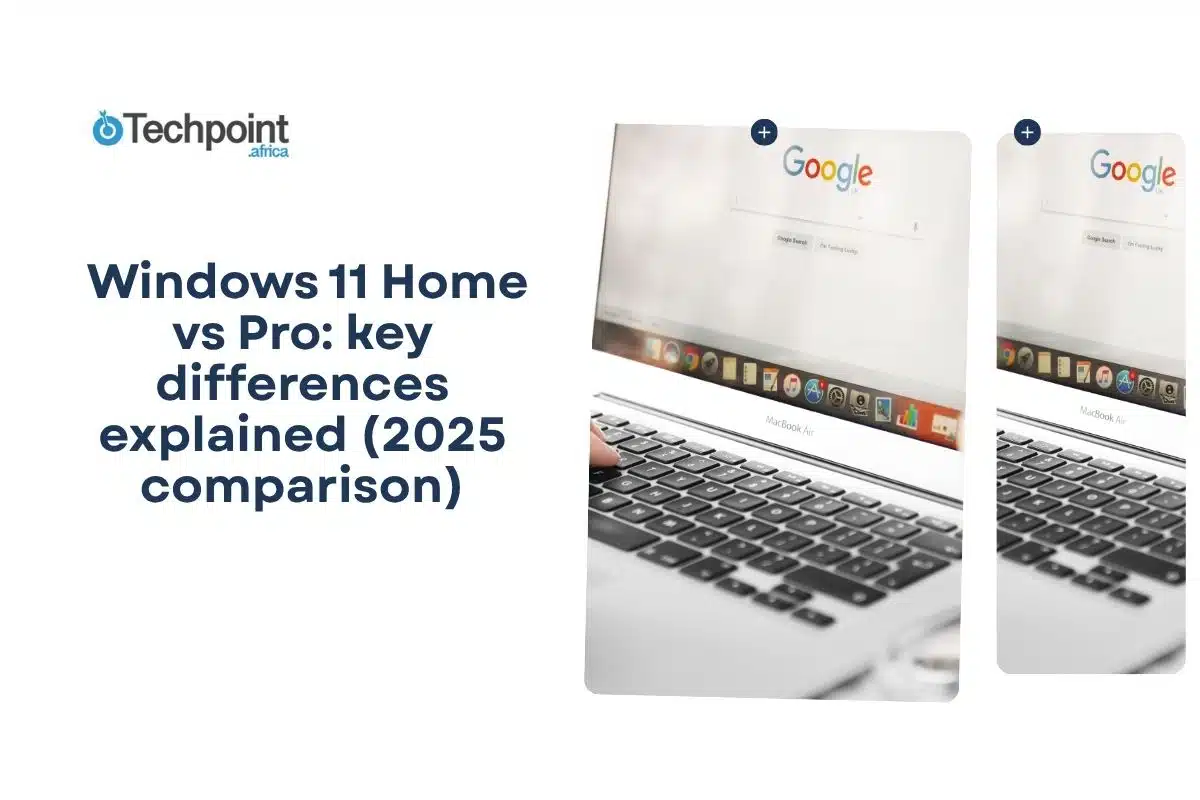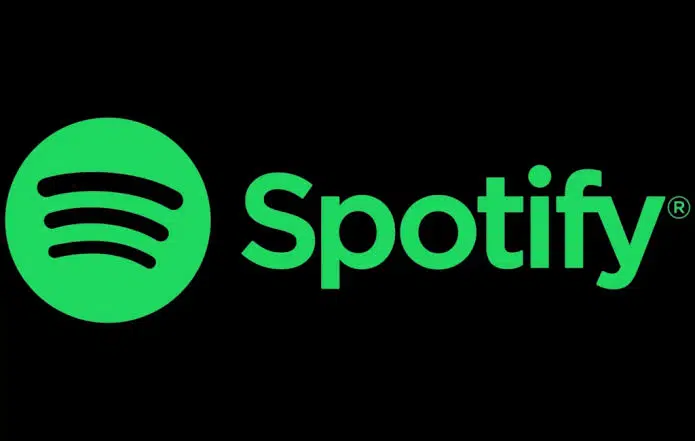
Music has no time setting, and that is what Spotify had in mind when it hacked streaming with its offline mode.
However, several competitors hopped on the train, and my business was to find them.
I set aside two weeks to test five big music apps to see which one lets you download songs for offline listening without paying. To keep it fair, I tried Android and Windows apps where available, checked the free and paid tiers, and even used the free trials to see how downloads were restricted.
Additionally, I created playlists, tested full albums, and searched for lesser-known indie tracks to identify where the catalogs diverged. I didn’t want to check if downloads exist alone, but also if they work smoothly on the free tier.
After all was done, one platform stood out as a valid free option, a couple offered limited or partial access, and the rest locked downloads firmly behind paid plans. What you’ll be reading in the subsequent subheadings is the gist of it all.
But first, take a glance.
| Service | Free offline downloads? | How downloads work | Best use-case | Notes |
| Audiomack | Yes free tier supports downloads | Tap download on tracks/albums in the app; playable offline (app cache) | Offline listening to mixtapes, emerging artists | Officially supports free downloading of many tracks. |
| SoundCloud | No offline is a SoundCloud Go feature | Offline listening requires SoundCloud Go/Go+ | Free streaming; creators’ downloadable uploads may be saved externally | Some individual uploads are marked as downloadable by the uploader, but they differ from offline apps. |
| YouTube Music | No offline downloads require Premium | Downloads are limited to Premium subscribers; podcasts are downloadable regardless | Great streaming free tier; offline with Premium only | Official help states downloads are Premium features. |
| Apple Music | No requires subscription | Downloading the Apple Music catalog requires an Apple Music subscription | Apple device users who pay for a subscription | Apple’s support explains downloads are part of an Apple Music subscription. |
| Deezer | No offline requires Deezer Premium | Offline listening gated by subscription | Global catalog streaming with Premium | Documentation shows downloads are a Premium feature. |
1) Audiomack — free offline top choice
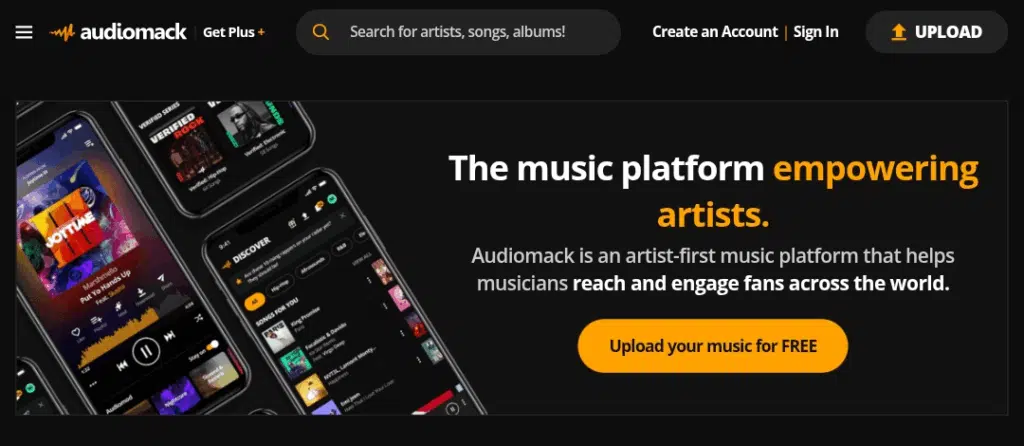
Audiomack has built its reputation on giving listeners something that most streaming platforms keep behind a paywall: reliable offline downloads on the free tier. I tested this claim thoroughly over two weeks, alternating between the Android app and web version, and the results matched the promise.
What worked: Audiomack lets users download a wide range of songs, mixtapes, and playlists directly within the app. The download button is clearly visible, and once a track is saved, it remains playable even when the device is in flight mode. I cleared my app cache, switched networks, and restarted my phone, but the downloads remained accessible. The playback engine is stable, too. When I resumed a playlist offline, it started without lag or buffering. This feature is prominently highlighted in Audiomack’s App Store and Google Play descriptions and performs as advertised.
What didn’t: Audiomack’s catalog leans heavily toward hip-hop, Afrobeat, Latin, and independent uploads. While this makes it a discovery platform for emerging artists, it does not rival the breadth of licensed tracks on Spotify, Apple Music, or YouTube Music. Another limitation is exportability: downloaded songs remain locked inside the Audiomack app and cannot be moved as MP3s to an external player. Regional restrictions also apply — some tracks can’t be downloaded in certain territories.
Who should use it? Audiomack is ideal for listeners who value offline access without a subscription and appreciate discovering emerging artists and community-driven content. A subscription platform may be better for fans who want mainstream, major-label catalogs, but Audiomack stands alone for free offline listening.
2) SoundCloud — downloads are conditional or paid
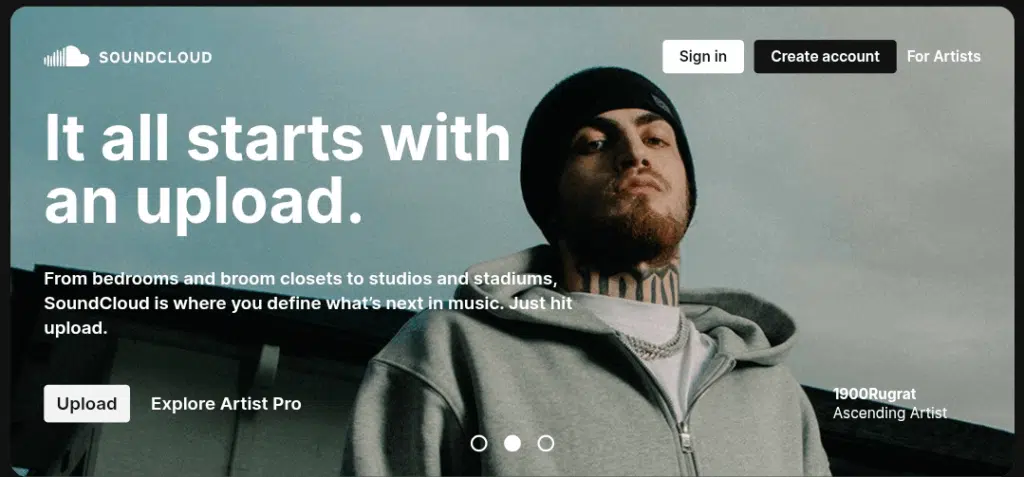
SoundCloud presents itself as a platform for independent creators, DJs, and remixers, and it offers one of the most flexible free streaming tiers among services. However, offline access is a different story. While the app allows unlimited free streaming, downloading is mainly tied to SoundCloud Go, a subscription plan.
What worked: Some creators voluntarily enable free downloads for their uploads. In these cases, the “Download” button appears on the track’s desktop page, and with one click, I could save the MP3 directly. Once downloaded, the file can be played in any offline player — a rare level of flexibility in today’s streaming world. This option can be a goldmine for niche genres, underground remixes, or DJ sets. The SoundCloud Help Center also clarifies that downloads depend entirely on the uploader’s permissions.
What didn’t: The catch is that these free downloads are not universal. Mainstream songs, charting albums, or label-backed releases generally don’t allow it. Authentic offline listening, which allows you to save entire playlists or libraries, is exclusive to SoundCloud Go subscribers within the SoundCloud app. I couldn’t select multiple albums and make them available offline without paying.
Who should use it? SoundCloud works best for users seeking underground mixes, independent uploads, or niche content where creators allow downloads. If your goal is to download any track you like reliably, SoundCloud’s free tier will disappoint. For most mainstream catalog needs, upgrading to SoundCloud Go is unavoidable.
3) YouTube Music — offline only with Premium
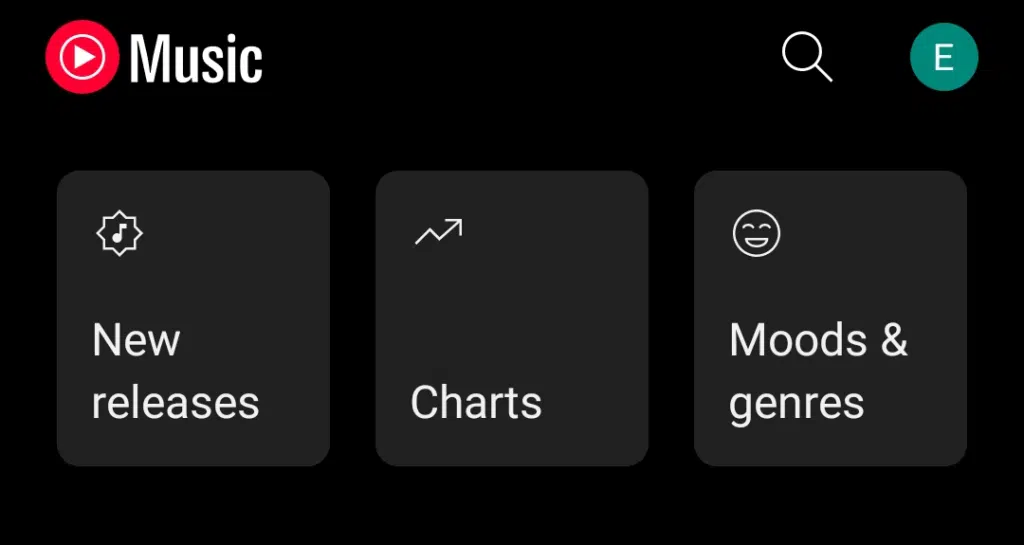
YouTube Music replaced Google Play Music with the promise of deeper integration between audio and video. Its free tier is ad-supported, and streaming works well enough. However, the service draws a hard line for offline listening: downloads are only available with YouTube Music Premium.
What worked: During a one-month Premium trial, I downloaded entire albums, playlists, and individual songs. These files played seamlessly on Android and iOS, even in airplane mode. The app makes it easy to manage storage, letting you see how much space downloads occupy. There’s also an option to auto-download your most-played tracks. For podcasts, downloads were available even without a Premium subscription, which is a small but notable exception.
What didn’t: Once Premium was cancelled, all downloaded music became inaccessible. Offline files are stored within the app and tied to an active membership, requiring periodic reconnection to verify the subscription status. Unlike platforms such as Bandcamp, there’s no way to export MP3s. The free tier offers no offline music feature — only streaming with ads. Workarounds such as third-party downloaders exist, but they violate YouTube’s terms of service and copyright law, making them an unreliable and risky option.
Who should use it? YouTube Music is ideal for users who already rely on YouTube for music discovery and are comfortable paying for Premium to unlock offline listening. Podcast listeners may find some flexibility for downloads, but for full music catalog access offline, Premium is mandatory.
4) Apple Music — downloads require a subscription
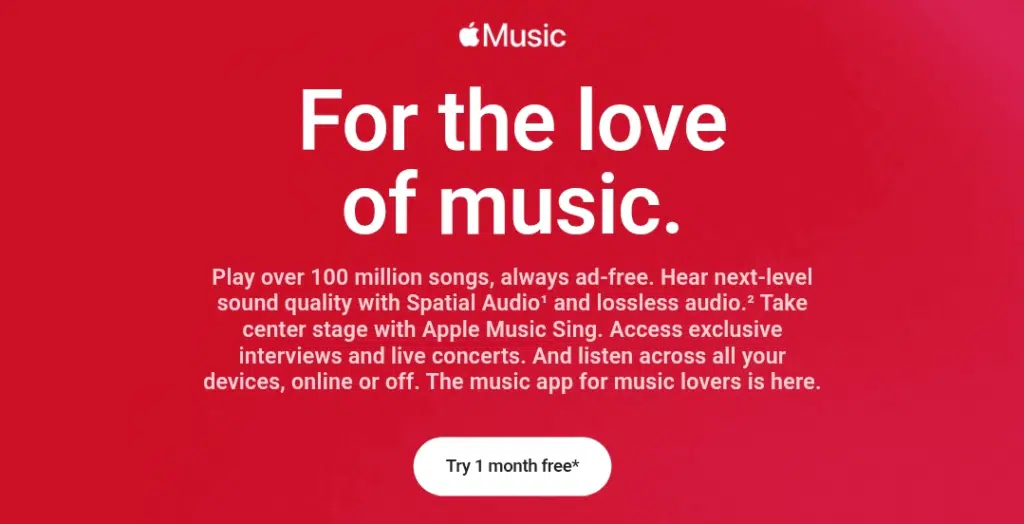
Apple Music is one of the most popular streaming platforms globally. It is integrated directly into iOS and macOS and is even available on Android. Its polished offline download system is available only to paying subscribers.
What worked: With a subscription, downloading is fast and intuitive. I could tap the download icon beside albums or playlists, and within seconds, the files were saved for offline playback. Apple’s ecosystem ensures these downloads sync across devices via iCloud Music Library, which is seamless for users juggling iPhones, iPads, and Macs. The downloaded tracks played perfectly in airplane mode, and album art, metadata, and playlists were preserved. Apple Support pages confirm offline playback as a core feature of the subscription.
What didn’t: Without an active subscription, the downloaded catalog tracks disappear or become unplayable. Apple does let users import and sync their own MP3s or purchased iTunes Store tracks, which can still be stored offline without a subscription, but this is not the same as accessing the Apple Music streaming catalog. Another drawback is that, unlike Audiomack or Trebel, Apple Music never pretends to offer free offline features — it’s strictly paywalled.
Who should use it? Apple Music is best for Apple device owners who want seamless integration across their hardware and are willing to pay for a subscription to unlock offline access. For those seeking free offline listening, this platform offers no real option.
5) Deezer — offline locked behind Premium

Deezer has a long-standing global presence, offering mainstream catalogs and unique features like Flow, its AI-powered recommendation engine. However, Deezer follows the same model as Apple and YouTube Music regarding offline playback: downloads are reserved for Premium subscribers.
What worked: Once I activated a Premium trial, I could download albums, curated playlists, and Flow-generated mixes. The offline playback experience was smooth on Android and desktop, with the app allowing me to manage storage by selecting “Download via Wi-Fi only” and setting limits. The interface marked downloaded content, and playback continued without interruption when I switched to airplane mode.
What didn’t: Deezer’s free plan only offers online streaming with ads — no downloads. Offline access is lost when your Premium subscription expires, and files remain locked in the app. Deezer’s support pages repeatedly emphasize this restriction, directing users to upgrade to Premium. Unlike Audiomack, there’s no truly free path for reliable offline use.
Who should use it? Deezer is a strong option for those who appreciate its Flow recommendations and diverse catalog, but only if they are willing to pay for a subscription. For free users, the offline wall renders the service a streaming-only option.
Data usage & storage space
Downloading songs gives peace of mind when the network drops, but it also raises two practical concerns: how much space the files take and how each platform manages those downloads behind the scenes. My testing across Audiomack, SoundCloud, YouTube Music, Apple Music, and Deezer revealed key differences that every listener should know.
Audiomack
- All downloads remain inside the app; they do not appear as MP3s in the phone’s storage.
- Once saved, tracks keep working without re-verification, even if the device stays offline for weeks.
- The more playlists you download, the more internal storage the app consumes, so periodic cleanup may be required.
SoundCloud
- Free users can download only when the uploader enables a direct link; these files save as standard MP3s, outside the app.
- With SoundCloud Go, playlists can be stored offline but stay locked in the app.
- Subscription-based offline files require the app to check in online periodically.
YouTube Music
- Offline files are encrypted inside the app and inaccessible through the file manager.
- A re-verification cycle runs roughly every 30 days, ensuring the subscription remains active.
- Higher-quality settings noticeably increase storage use; long playlists can consume gigabytes quickly.
Apple Music
- Songs downloaded from the catalog are tied to an active subscription and stored inside the Music app.
- They also occupy device storage, though iCloud Music Library helps shift files across Apple devices.
- Cancelling a subscription makes all saved tracks inaccessible.
Deezer
- Premium subscribers can save albums and playlists, but only for in-app playback.
- Files require account verification during reconnects.
- Storage impact depends on chosen audio quality, with high-fidelity downloads taking up significant space.
These differences mean Audiomack offers the most durable offline access without checks, while the major services trade convenience for control over file handling.
Summing up,
Regarding free offline listening, Audiomack is the only platform in this group that consistently delivers. Its downloads worked exactly as advertised across playlists and albums, and playback remained reliable even without an internet connection.
The other services (YouTube Music, Apple Music, SoundCloud, and Deezer) all require subscriptions for offline features, with SoundCloud being the exception, as artists can manually enable downloads.
Audiomack may not have the same depth as the major labels, but it’s the most straightforward choice for anyone who needs offline access without spending money. You’ll likely have to pay if you’re after bigger catalogs, cross-device syncing, and polished extras. But for free, reliable offline listening, Audiomack stands alone.
FAQs on the free Spotify alternatives with offline mode
Q: Can I export downloaded songs from Audiomack as MP3s?
- A: No. Audiomack’s offline downloads are designed to stay within the app. They cannot be exported as standalone MP3s or transferred to another player. The feature lets users listen without data or Wi-Fi, not to replace purchasing or owning files. This restriction is also what makes Audiomack’s licensing model possible.
Q: Does YouTube Music ever let free users download songs?
- A: Officially, no. Google states clearly that downloads are a Premium feature. There is one partial exception: podcasts. Depending on the creator and content type, podcasts can sometimes be downloaded for free. Beyond that, any third-party downloading tools or recorders you find online fall outside YouTube’s terms of service and may raise copyright concerns, so they’re not recommended.
Q: Are there legal ways to get offline music without subscribing?
- A: Yes. The most reliable route is when creators make their work downloadable directly, such as certain uploads on SoundCloud or official artist websites. Another safe approach is to purchase DRM-free MP3s from stores like Bandcamp or Amazon. However, broad offline access to a full streaming catalog almost always requires a paid subscription.
Q: Is Audiomack legal and safe to use for downloads?
- A: Yes. Audiomack is a legitimate service that partners with artists and rights holders to make offline playback possible. Downloads are enabled where licensing allows or where artists upload music directly. Its app descriptions and support pages openly advertise offline playback, so users can rely on it as a safe option.
Q: Will downloaded tracks stop working if I go offline for a long time?
- A: On subscription services like Apple Music or Deezer, downloaded tracks require periodic internet checks to confirm your account status, usually once a month. With Audiomack, there’s no subscription, so offline files inside the app remain playable indefinitely without renewal checks.
Q: Can I use desktop apps to download free tracks on Audiomack?
- A: Audiomack reserves its download feature for mobile apps. The desktop web version is streaming-only. If your goal is to listen offline, the Android or iOS app is the best way to use Audiomack.
Q: Which service is best for complete mainstream catalogs with offline mode?
- A: Apple Music, YouTube Music, and Deezer all provide robust mainstream catalogs, but you must pay for their offline functionality. They’re subscription-centric platforms.
Q: Any safe workarounds to get offline music from paid services?
- A: The safest path is to use these services’ official free trials or buy DRM-free tracks outright. Unofficial ripping or recording tools breach the terms of service and expose users to malware and copyright issues.
Q: What if I only want to save podcasts offline?
- A: Many services allow podcast downloads regardless of whether you pay for music. YouTube Music, Apple Podcasts, and Spotify all provide offline podcast access. If your offline need is strictly podcast-focused, you don’t need a full music subscription.

